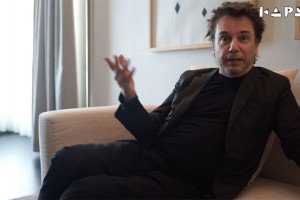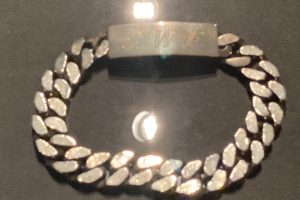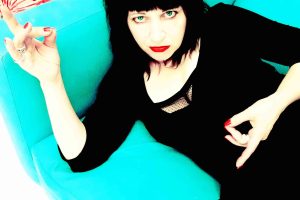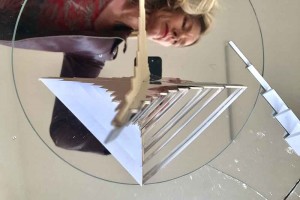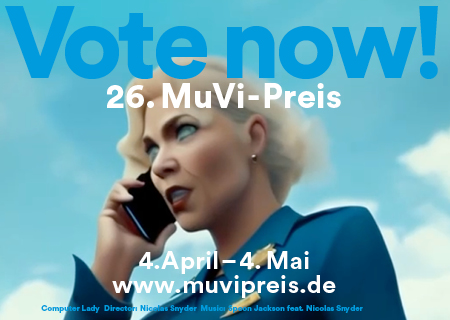Margarete Kreuzer: “I want my documentaries to tell stories about dealing with reality.”
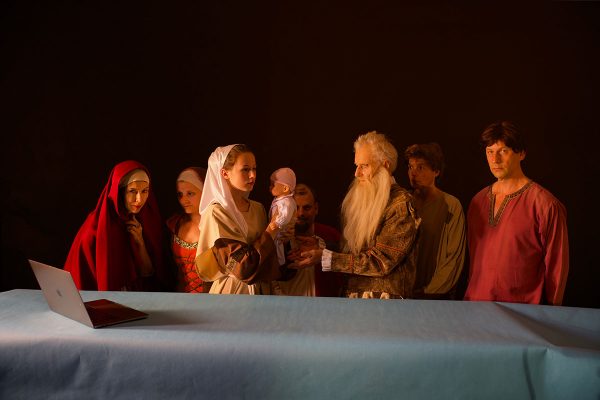
“Rivalen der Renaissance”, ein Film von Margarete Kreuzer über Mantegna und Bellini.
Margarete Kreuzer is a filmmaker. I often saw her in Berlin in the 90s moving about with film crews but only met her in 2005 at the Gallery Janine Bean. I was being represented by the gallery back then and Margarete came to every opening. At some point she interviewed me for the first time for a TV documentary.
In addition to having made fantastic documentaries on Tangerine Dream, Roma musicians and classical painting, she regularly shoots short TV contributions in which she tries to support female artists as often as possible. This is rare in the public TV business as well as in the film industry. The immense importance of it must however be emphasized. As long as women are not interviewed and supported on an equal footing in the public media, their achievements will disappear and, as they have been doing for a long time, will not be perceived in terms of cultural history. For that I would like to thank Margarete and present her here today.
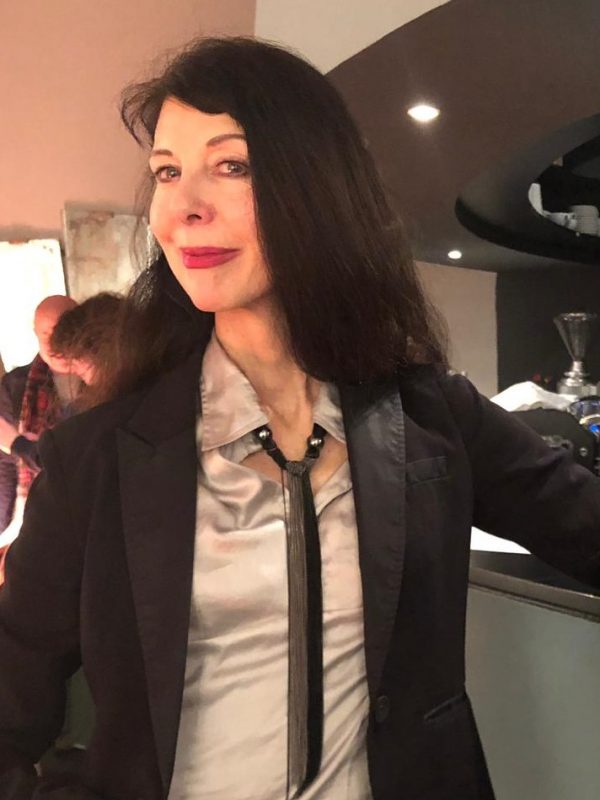 Danielle De Picciotto: Margarete, how did you get into filmmaking?
Danielle De Picciotto: Margarete, how did you get into filmmaking?
Margarete Kreuzer: Actually, I wanted to live as a poet and writer after studying literature, journalism and psychology. At the end of the 80s, I published poems and short stories in anthologies and later on I received a scholarship from the Berlin Cultural Senate. But then I became fascinated by the work of Pier Paolo Pasolini, a journalist and director who wrote beautiful poems. I also became interested in the films of Leni Riefenstahl. Poetry has one thing in common with film: the creation and combination of images and sound that resonates with an audience. Pasolini and Riefenstahl significantly changed the visual language through their films. This fascinated me. I started to make small short films like “Mnemosyne, the Memory”.
I produced this film in the cinema of the former Kunsthaus Tacheles at the beginning of the 90s. Soon after, I briefly studied dramaturgy at the HFF. Previously, I had attended a film seminar at the Free University of the award-winning documentary filmmaker Helga Reidemeister. My classmates and I produced a 16mm documentary during this seminar on a train that drove from Paris via West Berlin to Moscow. At that time the wall was still standing. The train would stop at Wannsee and then go on to Berlin Zoo. After that we had to get off because we did not have a visa for the so-called “East Zone”. We had only half an hour to capture the reality on the train. Movies are movement. On one of those days I was working with a 16mm camera for the first time. I really wanted to get an interview with a Russian, but I did not succeed. It was too tight, the camera distance was not wide enough and the time was too short. I was really upset and cried before getting off the train. It was frustrating. That was when I understood that filmmaking is the confrontation with reality.
You’ve done a lot of documentaries so far. Do you find reality more interesting than fiction?
I want my documentaries to tell stories, and these stories always are about dealing with reality. I am interested in people and their topics and then create my own perspective. I am interested in people in general, whether they are artists or scientists, and how they deal with certain things. The most important thing in documentary film, for me, is emotion, the feeling that transports itself through a subject. Of course, information on the subject is also conveyed through the genre, but if a documentary, even if it is a scholarly documentation, does not convey a feeling, then it does not draw me under its spell. Then I usually leave the cinema or switch off. I always try to be my own spectator. Reality versus fiction.
That reminds me of my film on mathematics and culture: “The Shadowrealm. The power of mathematics “. I made a film about Peter Weibel and Hans Magnus Enzensberger about a very abstract topic. The challenge for me was to turn an abstract world into pictures: to make something visible that is not visible. For me, this is a form of fiction that can be just as exciting as filming a drama.
Your movie about Edgar Froese from Tangerine Dream has received a lot of attention. What interested you in him? Did you watch his concerts earlier?
Yes I did. He performed on more than 15 festivals around the world. Of course, I saw Tangerine Dream live. I heard them as a teenager and would smoke hashish during their shows. I grew up in the countryside, and there was not much to see, but I could dream with the music of Tangerine Dream. I loved the early solo albums by Edgar Froese and still do today, like “Epsilon in Malaysian Pale”, “Aqua”, “Stuntman”. Back then the music was new and TD and Edgar Froese produced everything analogue, which was especially charming. The songs inspire space pictures in your mind. The sound is not controlled by structure as a pop song with lyrics usually is.
When I moved to West Berlin to study in 1985 I did so because Edgar Froese, David Bowie and Nick Cave were living in the city, I never thought that I would meet all three for interviews. I met Edgar Froese thorugh David Bowie because I interviewed Bowie for the ARD in New York. I was supposed to make a movie on Bowie twice, and both times it did not work out. The first time in 2003 it was meant to be for the ARD program “Legends”, in the section, in which only dead celebrities are portrayed, which Bowie understandably did not want to do and then the second time for ARTE, but there he was already dying. During that time, I called Edgar twice. The TG film idea resulted from the last telephone call. Edgar Froese was a very unusual artist, he composed more than 150 albums, was successful in the music business for decades, always full of ideas and was a crazy worker. He was highly intelligent and incredibly well read. For the first personal interview we met in Vienna with his wife Bianca. We spoke about Wittgenstein, Bach, Picasso and about quantum physics. I was incredibly impressed. At the same time he had a very gentle side.
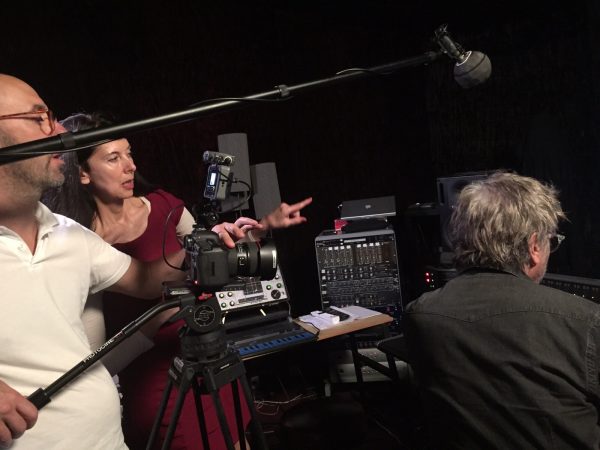 How do you feel about his music?
How do you feel about his music?
I have to admit that I like the analog pieces better than the digital ones. I find the early years the most interesting. We have gained a lot through digitization but have also lost a kind of humanity. That sounds pessimistic, but in his analog pieces I can hear the random magic, the uncontrollable. What can we do against the digital pre sets? Improvisation maybe. Edgar and I spoke a lot about that. I think Tangerine Dream and Edgar Froese created a new style. They evolved from Krautrock and helped to define ambient, techno and electronic music today. They were pioneers.
Do you think that as a filmmaker you should feel neutral towards your subject or emotionally bound?
A critic at the Bienale, at which my movie “Revolution of Sound. Tangerine Dream “was competing in 2017, said I had made an uncritical homage to Edgar Froese. Well I can only say that it was not totally uncritical and why would I take it upon myself to spend years and years working on presenting an artist’s work? Why would I deal with producers? Why would I deal with exhausting and nerve-racking work? The reason is obviously: My enthusiasm and passion for this person gave me the drive. So basically I think that the critical attitude towards something thing or a person stems from journalism, it is a journalistic and not necessarily artistic approach. In this movie I allowed myself to pursue an artistic and totally subjective approach.
You often work with broadcasters – in collaboration with ARTE, ZDF or RBB. Is this a better way to fulfill your dreams in comparison to being self-employed?
That’s a question I often discuss with one of my director friends. She produces all of her own films because she no longer wants to work with producers and editors. Why? Because the producers always try to save on expenses, pay moderate fees because they need to earn money on the film and the editors have their specifications for the transmission schemes. The editors also always want something new: a new perspective, a new style. But basically, there are many editors at ARTE and in the other broadcasters who are good sparring partners when it comes to making a film. Incidentally, I love the genre of boxer films. But the shape is also determined by the transmission scheme and the length. The documentaries on TV are standardized in time, usually between 43 and 58 minutes. I do not think that’s a good idea. Each film needs its own format and its own length. In that sense, it is not always easy to realize your dreams”. Which is a pity: There are hardly any essay films on TV, even on ARTE. Nontheless I think working together with TV companies is usually ok because they do good promotion. In a way I also have to compromise because without a channel there is no film, no station, no promotion. On the other hand film funding does not help much when things need to go fast. When Edgar died suddenly, the long film version “Revolution of Sound. Tangerine Dream ” was funded by fans on Kickstarter. That was great.
Basically I think the best way to realize your dream is to work with a good producer, a good editor, a good distributor and have great film promotion. That’s always perfect. If people trust each other, then its possible.
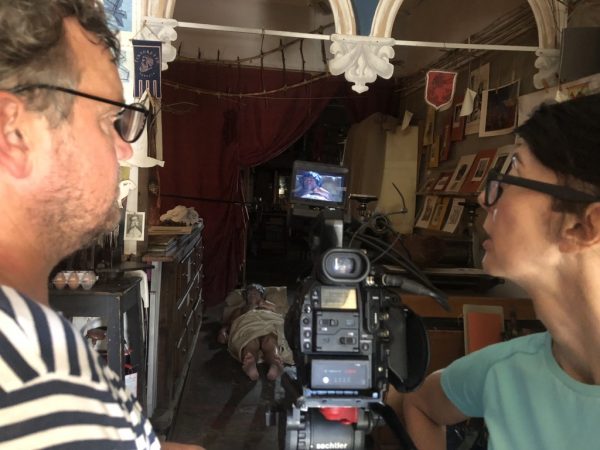 What about discrimination in the world of directors?
What about discrimination in the world of directors?
Does it exist?
There is definitely discrimination and it always concerns women. It is true that female German directors are still receiving less financial support than their male counterparts in the feature film sector. This is a continuing theme at the Berlinale. Freelance journalists are often better paid than their female counterparts as broadcasters. Politically persecuted directors are unfortunately everywhere. It is great if festivals in countries with democratic governments show their films anyway.
Your films often speak about music – is that your special hobbyhorse or is it a coincidence?
At the beginning, I often made small contributions to ARTE and ARD about poetry, literature and philosophy, for example about Gilles Deleuze’s theory on the question: how does the new come into the world? It takes an intellectual approach. But I continued to develop and grew more and more interested in emotions. That’s why I love music, because it makes you feel things in a very straightforward way. When I hear the “Well-Tempered Clavier” by Bach, then I become quite melancholy, Gregorian chants relax me, “Fauni Gena” of “Tangerine Dream” makes me dream, David Bowie’s music gives me energy, hackedepicciotto pieces encourage me to travel in thoughts or immerse myself in an idea. Music is just great, and if it includes good lyrics, there comes the poetry and then sound and language are bound together. Shooting a film is like traveling for me. It is not a coincidence that in 1885 the Lumiere brothers made a film about the arrival of a train.
Your last big movie was about the artists Bellini and Mantegna in cooperation with the National Museums of Berlin – what was the most interesting thing about this for you?
The cooperation with the National Museums of Berlin was great. I got support from all sides, and I was very grateful that the film had its premiere in the Museum Gemäldegallerie. I was interested in doing something new. I had not shot a documentary about two painters until, then although I did know a lot about the Renaissance, because I had studied the mathematics of the Renaissance in my youth. This was my first film about two painters who knew each other, who competed and inspired each other. I mainly dealt with the emotional state of both. Both painted the same picture subject: “The offering of Jesus in the temple”but at tdiffernet times.
Basically it is a family portrait. Andrea Mantegna was the brother-in-law of Giovanni Bellini. They were linked together throughout their lives and both were pioneers in painting. In the early Renaissance, Andrea Mantegna was the first to establish the cult of antiquity in Florentine art. His brother-in-law Giovanni Bellini is considered the inventor of Venetian painting. Both are among the most important artists of this era. They met in their studios in Venice and influenced each others work over many years. In my movie I stage the two paintings “The Offering of Jesus in the Temple” as a Tableau vivant (French: “living picture”), in other words both paintings are depicted by living people to demonstrate how the relationship between the painters really was. I was excited about making a film about two realtively unknown painters. Their pictures reveal a lot about their lives if you understand their symbolism.
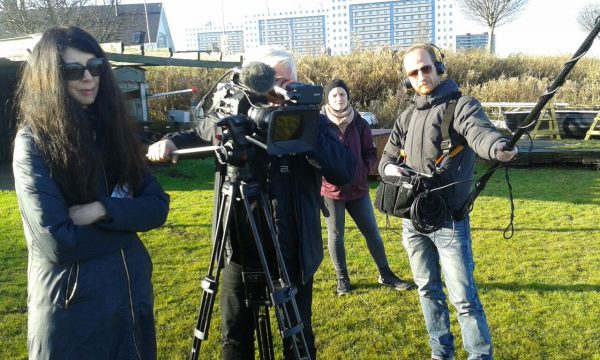
What are you currently working on?
I am currently working on different themes.
The first one is an art historical documentation. A subject that is set in the last century and deals with European art.
I would also like to switch to the feature film genre, the fictional one. I already have some ideas for this . But as I’m superstitious I will not mention more about either because they are not yet funded.
What are your future plans / dreams?
I’m always get surprised by reality. I think up something, and then I’m surprised because it suddenly happens but its not how I imagined it. That’s why I’m careful with dreams, plans and wishes. But I as mentioned I would like to shoot a movie and a series.
I am working on it.







